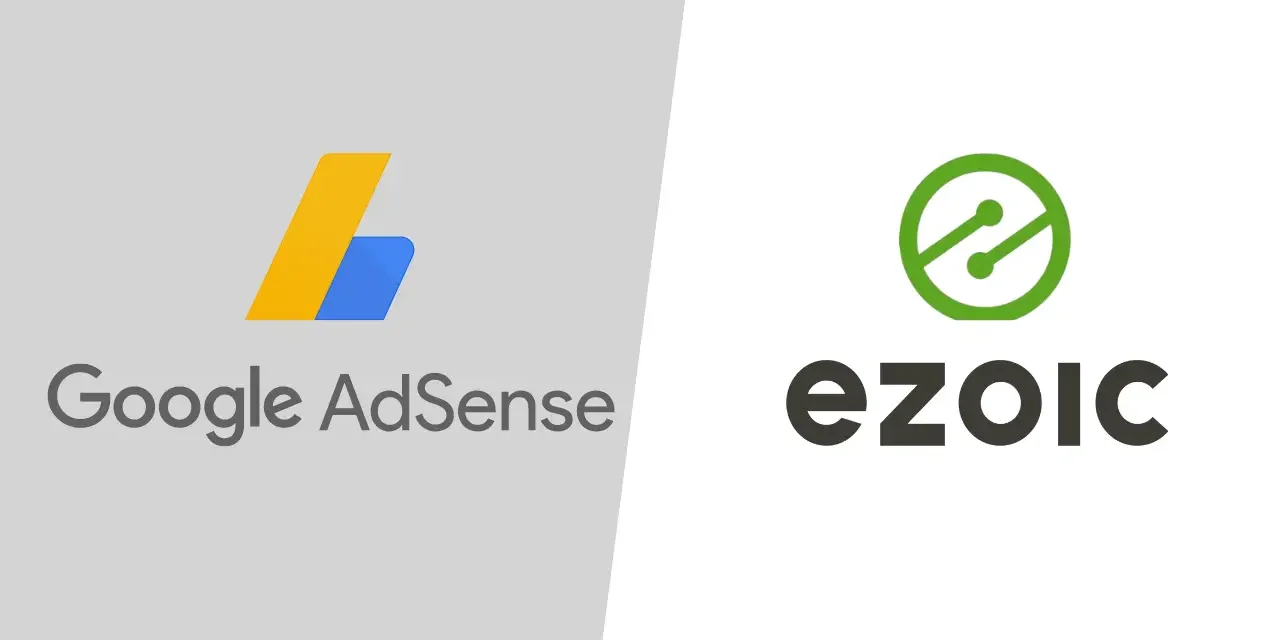Introduction
When it comes to monetizing a website or blog, Google AdSense and Ezoic are two popular platforms that offer revenue-generating opportunities through display advertising. Both platforms have their strengths and weaknesses, making it crucial to understand their pros and cons before making a decision. In this article, we will compare Google AdSense vs Ezoic, examining their key features, benefits, drawbacks, and provide a final verdict on which platform might be the right fit for your website monetization needs.
Google AdSense: As one of the most widely used advertising networks, Google AdSense has established itself as a trusted and reliable platform. Here are some of the key pros and cons of using AdSense:
Pros of Google AdSense:
- Ease of Use: Google AdSense offers a user-friendly interface, making it easy for beginners to get started with monetizing their websites.
- Vast Advertiser Network: AdSense connects publishers with an extensive network of advertisers, increasing the chances of relevant ads being displayed on your website.
- Diverse Ad Formats: AdSense offers various ad formats, including text, display, and video ads, allowing you to choose what suits your website’s design and content best.
- Reliable Payments: Google AdSense has a solid reputation for timely and reliable payments, ensuring publishers receive their earnings promptly.
Cons of Google AdSense:
- Strict Policies: AdSense has stringent policies and guidelines that publishers must adhere to. Violating these policies may lead to temporary or permanent account suspension.
- Limited Control: Publishers have limited control over the types of ads displayed on their websites. While you can block specific categories, you cannot control the exact advertisers.
- Revenue Share: AdSense keeps a significant portion of the ad revenue, with publishers typically receiving 68% of the generated income.
Ezoic: Ezoic is an ad testing and optimization platform designed to maximize website revenue. Let’s explore the pros and cons of using Ezoic:
Pros of Ezoic:
- Ad Testing and Optimization: Ezoic utilizes advanced AI algorithms to test and optimize ad placements, sizes, and layouts, maximizing revenue potential.
- Improved User Experience: Ezoic focuses on enhancing user experience by reducing ad clutter and employing strategies like lazy loading to speed up website performance.
- Revenue Diversification: Ezoic integrates with multiple ad networks and exchanges, allowing publishers to access a broader range of advertisers and revenue sources.
- In-depth Analytics: Ezoic provides detailed analytics and insights into ad performance, user behaviour, and revenue data, enabling publishers to make informed decisions.
Cons of Ezoic:
- Learning Curve: Ezoic’s platform can be more complex and overwhelming for beginners compared to Google AdSense, requiring a learning curve to fully utilize its features.
- Minimum Traffic Requirements: Ezoic has minimum traffic requirements, which may pose a challenge for websites with low traffic volumes.
- Revenue Share: Ezoic operates on a revenue-sharing model, and while the exact percentage varies, publishers typically receive around 80% of the generated revenue.
Below is a tabulated comparison between Google AdSense and Ezoic:
| Google AdSense | Ezoic | |
|---|---|---|
| Ease of Use | User-friendly interface | The learning curve for beginners |
| Advertiser Network | A vast network of advertisers | Integration with multiple ad networks |
| Ad Formats | Text, display, and video ads | Flexible ad placement and customization |
| Control | Limited control over ad types | Advanced ad testing and optimization |
| Policies | Strict policies and guidelines | Compliance with policies is required |
| Revenue Share | Publishers receive 68% of ad revenue | Publishers receive around 80% of the revenue |
| User Experience | Dependent on ad placement and design | Focus on improving user experience |
| Analytics | Basic performance insights | Detailed analytics and revenue data |
| Traffic Requirements | No specific traffic requirements | Minimum traffic volume may be required |
Please note that these points are generalized, and the exact features and experiences may vary based on specific circumstances and updates to the platforms.
Final Verdict Google AdSense vs Ezoic:
Choosing between Google AdSense and Ezoic ultimately depends on your specific website goals and requirements. If you are a beginner looking for simplicity and ease of use, along with a vast network of advertisers, Google AdSense might be the right choice. On the other hand, if you have a higher traffic volume and value advanced optimization features, revenue diversification, and detailed analytics, Ezoic could be the preferred option.
It’s important to note that some publishers combine both platforms, utilizing Google AdSense as a primary network and Ezoic for optimization and revenue diversification. This hybrid approach allows them to benefit from the strengths of each platform while minimizing the drawbacks.
In the end, carefully evaluate your website’s needs, consider your level of expertise, and analyze the pros and cons outlined in this article to make an informed decision that aligns with your website monetization goals.
You can also check out Getting Started with Programming: 5 Apps to Begin Your Coding Journey




